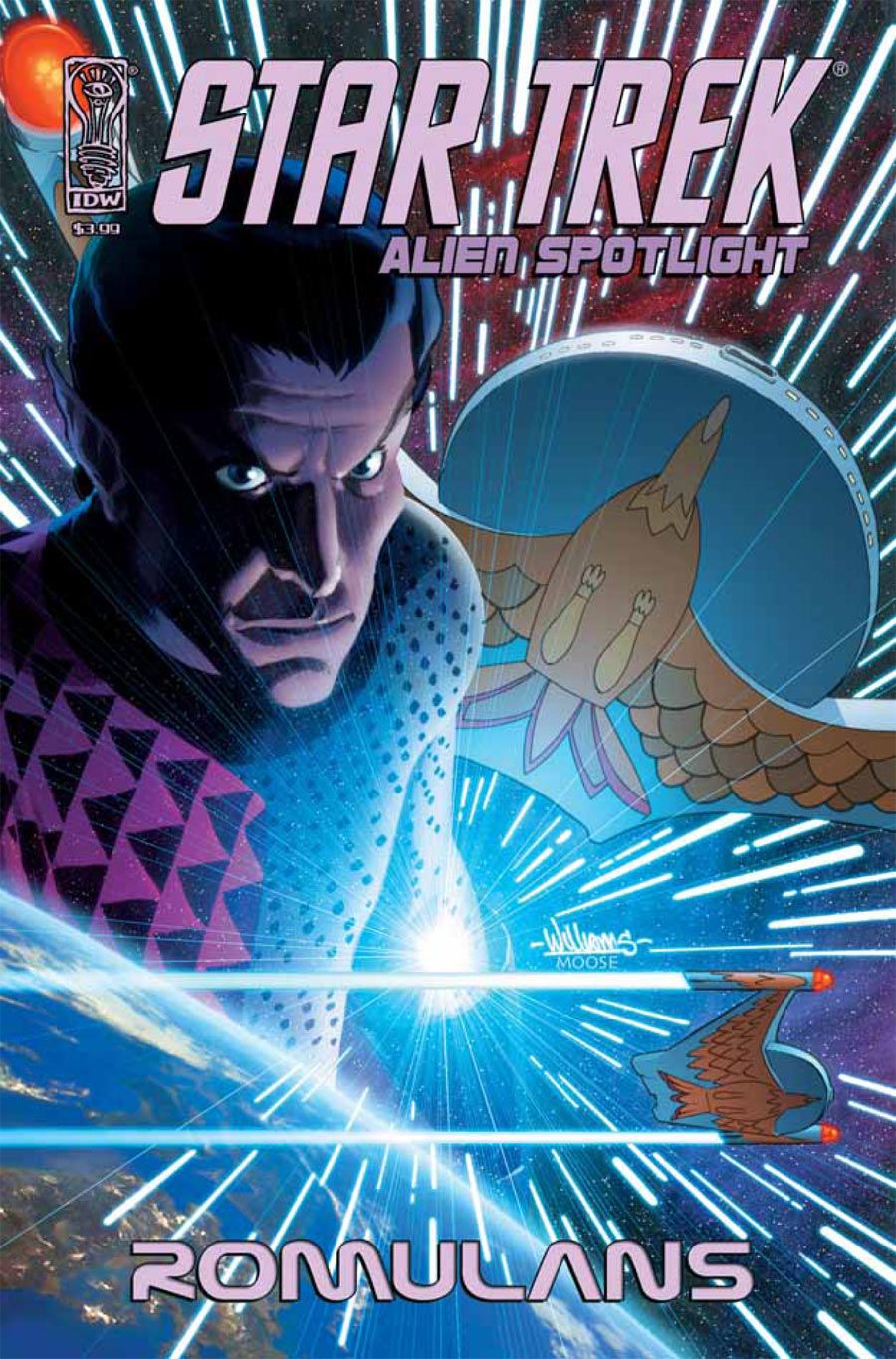For a comic featuring mostly unknown characters in a very event-specific story, it really does live up to its title of "Star Trek: Alien Spotlight: Romulans" in its ability to distill and communicate the basic concept of the Romulan people. Ian Edgington focuses on a few characters, managing to present various perspectives and hint at the broader culture of the Romulans. Readers not as familiar with the race may not fill in the gaps Edgington hints at, but they should still walk away with a general sense of what the Romulans are all about.
Commander Acastus has, somehow, won a seat in the Romulan Senate, overcoming his association with the Unification movement thanks to his traitorous former first officer. However, in winning the Senate seat, Acastus must give up his commission in the military and has also gained the ire of the Romulan Praetor who is at odds with his politics. Since Acastus is a populist and a military hero, the Praetor naturally sees him as a threat and moves to eliminate him.
This is a very basic story, but one that sums up the Romulans well, highlighting the emphasis on politicking behind closed doors, the people's growing lack of faith in their leaders, and the military's frustration with inept leaders. Acastus is a middle ground character, both loyal to Romulus and a progressive. Edgington captures the conflicting movements in the Romulan people, with those in power doing everything they can to cling to it while a growing segment of the population calls for change.
None of the characters really exist beyond types, though, each in the issue to represent a part of Romulan society. As well, the dialogue is a little stilted at times with a lettering error in one scene that's a little confusing, attributing word balloons to the wrong characters. That Edgington doesn't really go that deep isn't entirely his fault since, like many "Star Trek" races, the Romulans are meant to represent certain aspects of humanity, and don't lend themselves to more complex characters.
The art of Wagner Reis has some rough spots, but also some very striking moments. Reis is obviously influenced heavily by Bryan Hitch, but lacks Hitch's ability to develop scenes where characters do nothing but talk - though, his facial expressions are very detailed and varied. The art works best during the action sequences where spaceships fight, and the bridge is a flurry of activity. He shows a lot of potential here; I particularly like his layouts, which find a middle ground between grids and dynamic panel placements, making for very readable pages that don't fall into a visual rut.
Longtime fans probably won't find anything new here, but since the Romulans have generally been kept at a distance in other stories, it's interesting to get a more inside perspective.
(Give Wagner Reis's art a look in CBR's preview.)

